Office design to enhance innovation and productivity
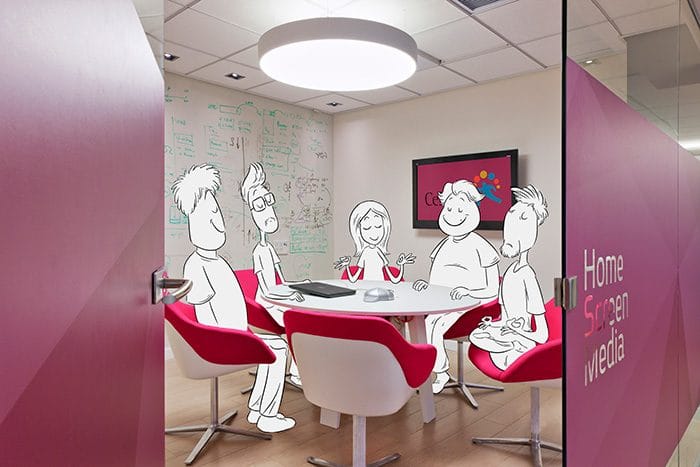
photographer: Katya Levin, renders: Lilika studio, illustrations: Nadav Nachmani
Office design | Employee community | Innovation | Productivity
Is there really a connection between these four elements?
There is a close relationship between them, and research from the last decade shows that intelligent and professional office design can contribute to forming an employee community, encouraging innovation and may also increase productivity. Otherwise, what causes all the largest and most successful companies in the world like Amazon, Facebook, Google and many others, to invest a huge fortune in designing their offices?
In this article I will describe the ways in which the three parameters can be significantly increased: community, innovation, productivity – through a suitable workspace. Some of the tools used to achieve this goal are simple and can be easily implemented in any office by implementing a few steps, or more complex ones, that require professional advice and planning. Practical tips for each topic are included in this article.
Key topics in this article:
- Chance meetings as a parameter for boosting innovation and productivity
- The cafeteria – the ultimate place to form a worker’s community
- Active multimedia for community development
- Designing the private workspace as a tool for creating a sense of belonging
Chance meetings as a parameter for boosting innovation and productivity
I will begin by describing a simple experiment conducted by a large pharmaceutical company. The experiment researchers, examined 50 sales agents who meet randomly during a work day, and increased the number of random meetings between them by 10% – sales increased by 10%!
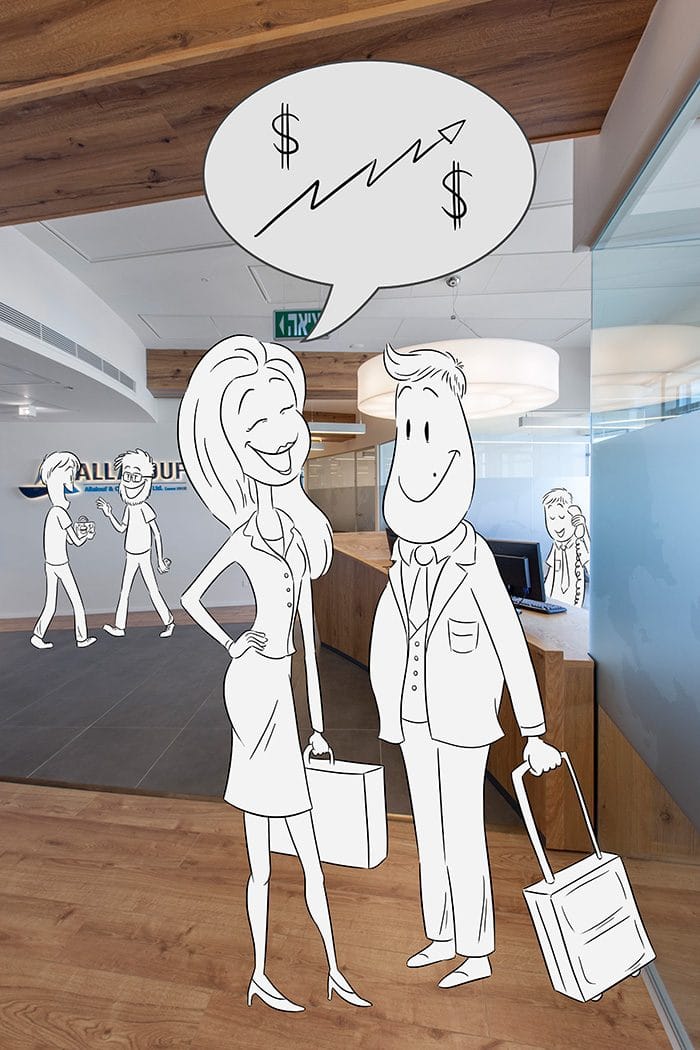
Random meetings are just one variable among many that enhance creativity, innovation and productivity in the work environment, and can be greatly influenced through the way we design public office spaces.
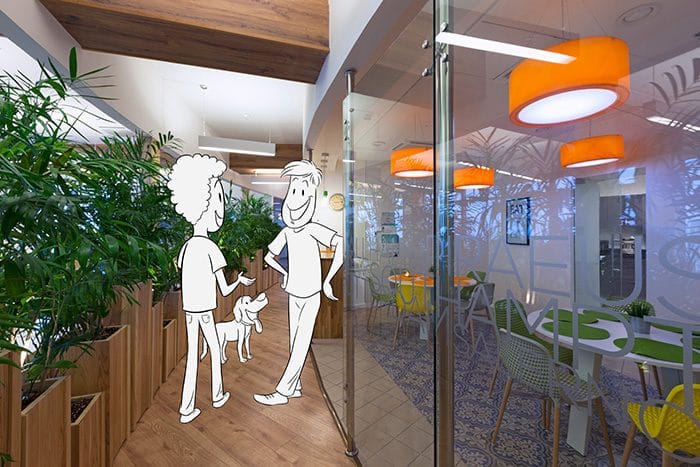
Chance Meetings and Innovation: the topic of random encounters has been shown to be a very significant contributor to both innovation and productivity. Innovation is created when random encounters take place between people who have very distinctive differences: completely different cultures, geographical locations from different regions of the globe. Random meetings are a great way to create innovation
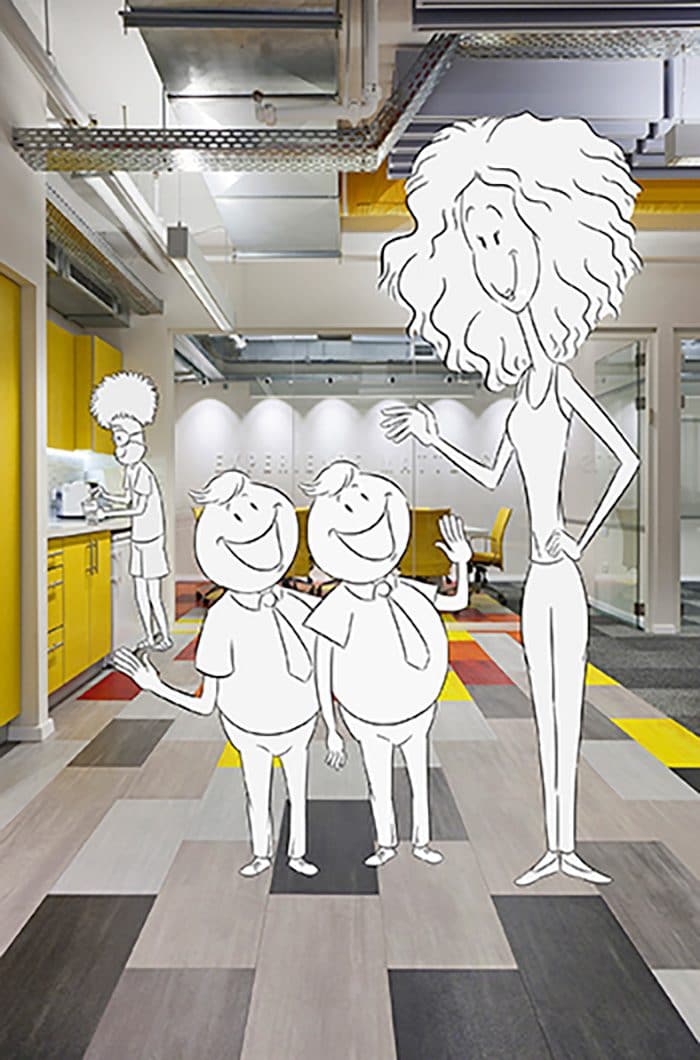
It is quite understandable, that in a small country like Israel, which has a large gathering of cultures, encounters between people from all corners of the world – will occur. These encounters generate innovation and fascinating fusion between East and West cultures, that reflects not only in high-tech but also in culture, art, and music.
Corridors are a great for creating random meetings between employees from different departments to motivate a discussion of what’s going on outside the department and get new ideas and important information. In fact, we have long considered the corridor not as some kind of transition area, but we treat it as an integral part of the work environment where small meetings can be held – ‘stand up meetings’. The corridor in the picture is also equipped with an erasable magnetic board that optimizes the meeting. The corridor has another role: it serves as a separate area where you can leave the open space to talk to each other without disturbing other employees around you.
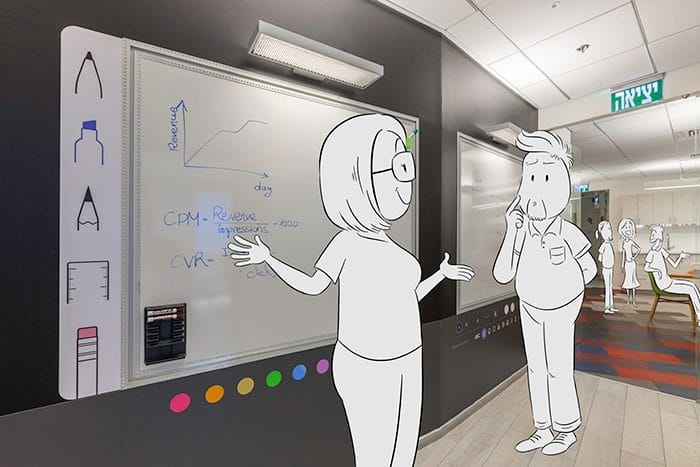
stand up meeting
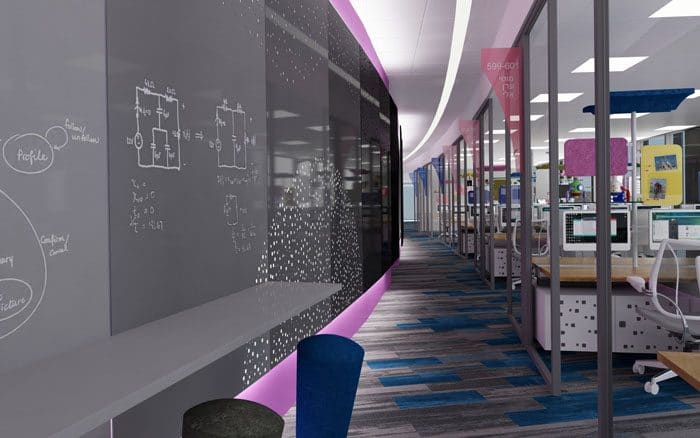
A magnetic erasure wall along side the corridor, serves as a communication wall
Chance Meetings and Productivity:
What happens when we randomly bring together people who are in the same department,
in the same field of practice and they have the same background, more or less? In this case, productivity increases.
This topic has been proven by research, and also makes great sense that people who meet a lot randomly become more connected socially,
which causes their interactions to grow and helps them finish their tasks faster and increases productivity.
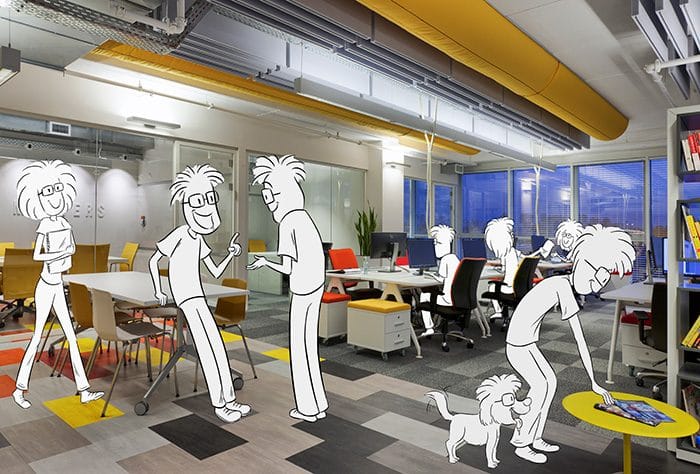
My Advice for Increasing the Number of Chance Meetings in the Office: In large offices where several dozen or more employees work, it is recommended to create an opportunity for random meetings between employees from different departments in the corridors. To do so, the corridors need to be well-lit, spacious, cozy and inviting, so that two or three people can occasionally stop in the hall, catch up and exchange information on the various departments of the company.
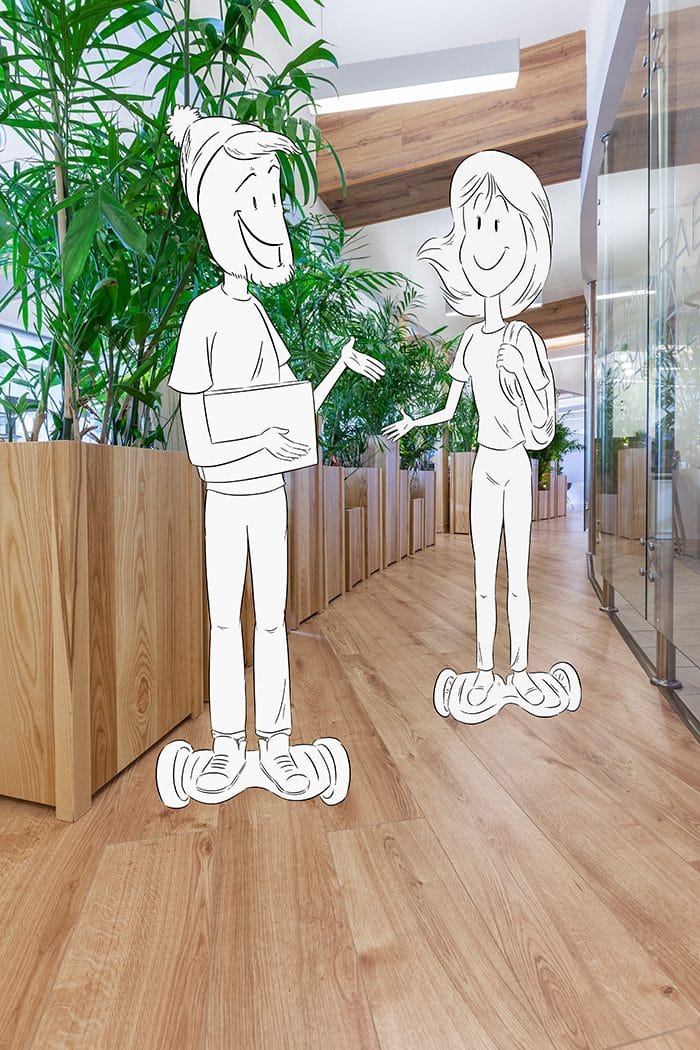
To encourage random meetings between employees from the same department or practice, it is advisable to place informal meeting areas close to the work area. The photography and editing area are often used as a meeting area where employees can consult and help each other. Coffee or sitting areas such as a small living room, within the department, also creates connection and communication.
The cafeteria – the ultimate place to form an employee community. The first thing we want to achieve in public spaces is forming a community of workers, and a good way to do so is through the cafeteria, when we eat together, we break down partitions and connect indirectly
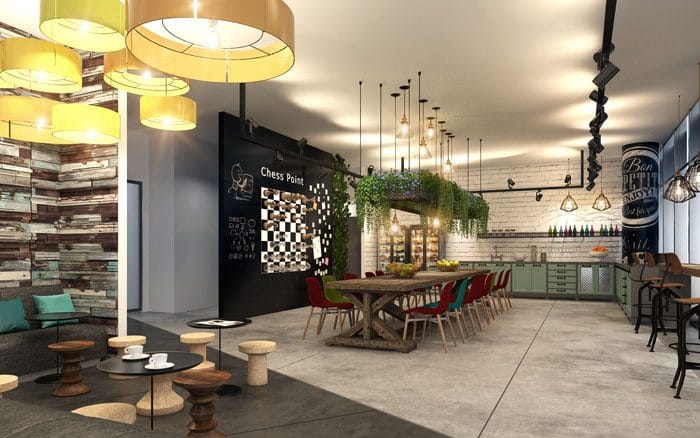
In the picture above, you can see a concept project I designed together with Ron Rubinstein Architects office. The principle of this elongated table is that it connects people to one another, and in this cafeteria, which is designed for about two hundred people each day, they can get to know new people through the shared meal.
When you sit at a knights’ table for lunch, chances are you will meet someone who is not from your department. This creates a connection between employees from different departments and profoundly affects the corporate culture of the company. In smaller companies where everyone knows everyone, the cafeteria is a place where communication between workers is renewed on a daily basis. If the cafeteria is well-designed, cozy, inviting and well-stocked, employees will prefer to eat together often, and perhaps bring their own food that they prepared at home. This way, they will eat healthier food and increase the chances of creating a unique employee community and corporate culture.
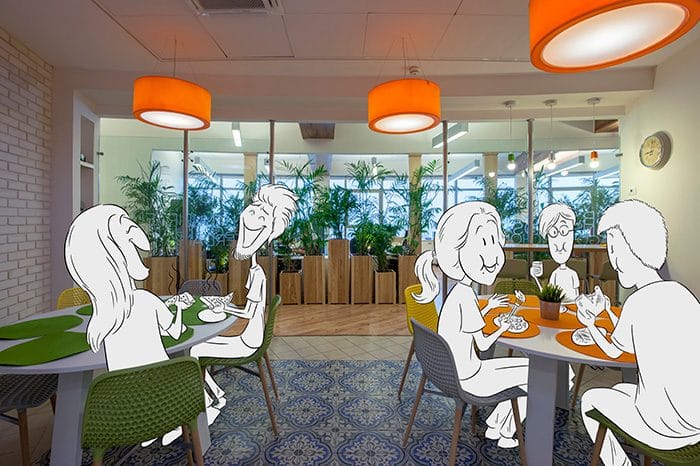
My advice for formulating a worker’s community in the cafeteria:
Think of the kitchen or cafeteria as the most well-maintained office area, the same way you refer to the representative areas of the office. Employees are the most valuable resource in the organization, and we must treat them accordingly. It is advisable that the kitchen will be well lit and equipped for the welfare and indulgence of the workers. Combining vegetation will significantly upgrade the kitchen. If the kitchen design will resemble a kind of cafe, you will be able to hold informal work meetings during all business hours and not just during lunch breaks. A fun kitchen that is designed in a cafeteria concept or cafe, should be located at the office entrance, so that guests who come can enjoy it as well.
Active multimedia to form a community
Another important method is what I refer to as ‘active multimedia’. I approach multimedia differently and give it a new interpretation. The main goal of active multimedia is to achieve active communication between workers rather than passive communication by use of screens like we see in companies many times.
The screens do not encourage activity and communication between employees such as erasable magnetic boards or magnetic games, unless we are talking about smart interactive screens.
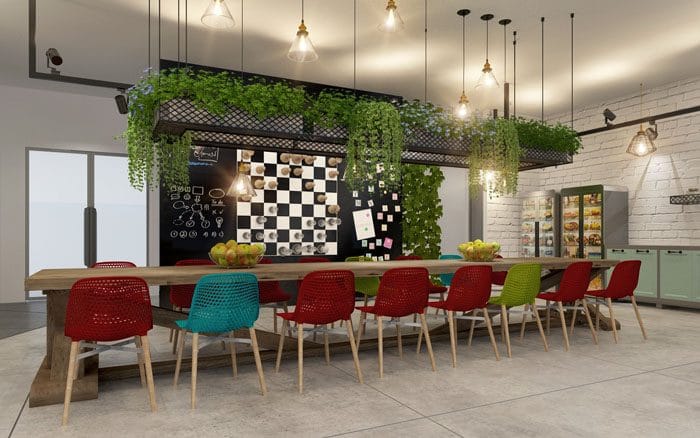
In the cafeteria photo above, you can see the board is actually a kind of ‘talking wall’, it contains a 3D magnetic game and an erasable board. The board allows to ‘transmit’ messages, if we compare it to digital media, through notes. This communication is physical and not digital, but it is very powerful and very active among the employees
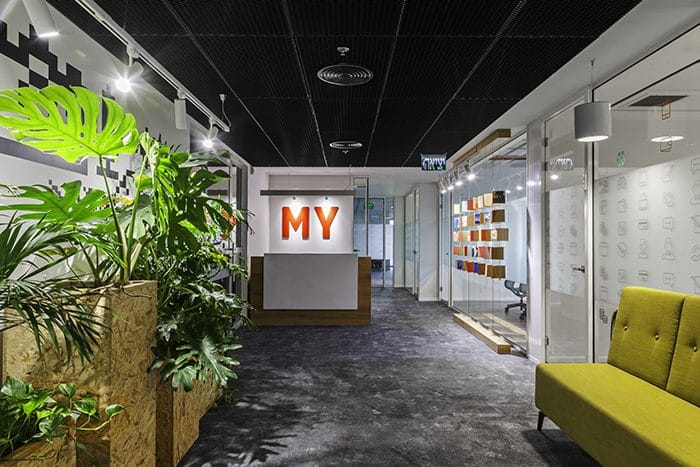
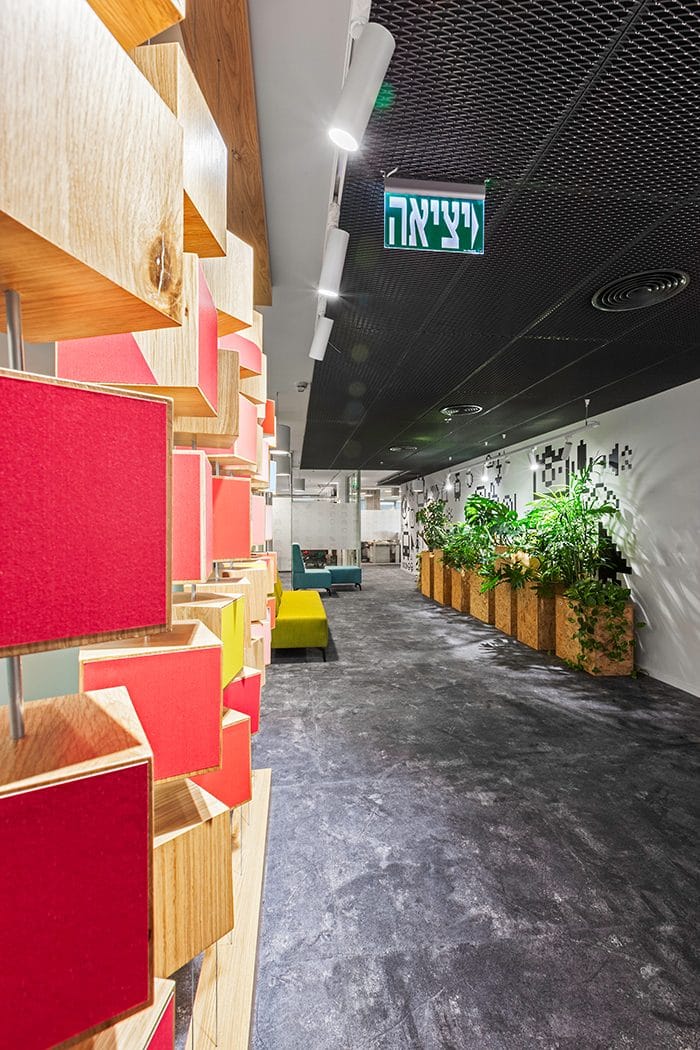
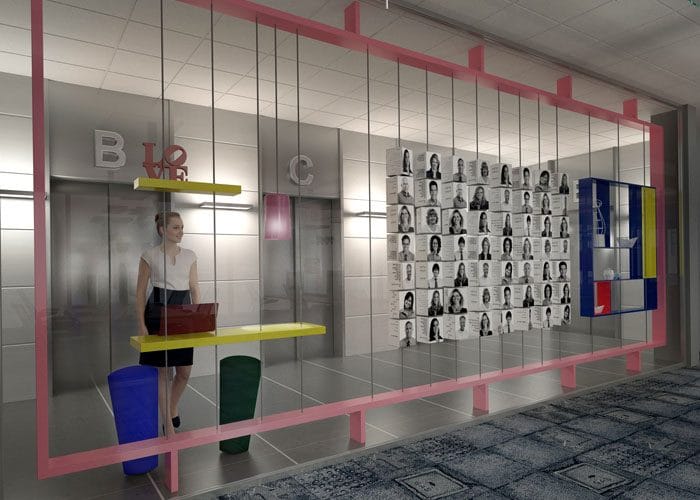
In the pictures above you can see a game concept at the floor entrance or office, which resembles a blog – not a virtual blog but a physical one. We implemented it at the lobby. Each employee has its own cube, on which he can convey all kinds of messages, connect and communicate informally with the rest of his staff.
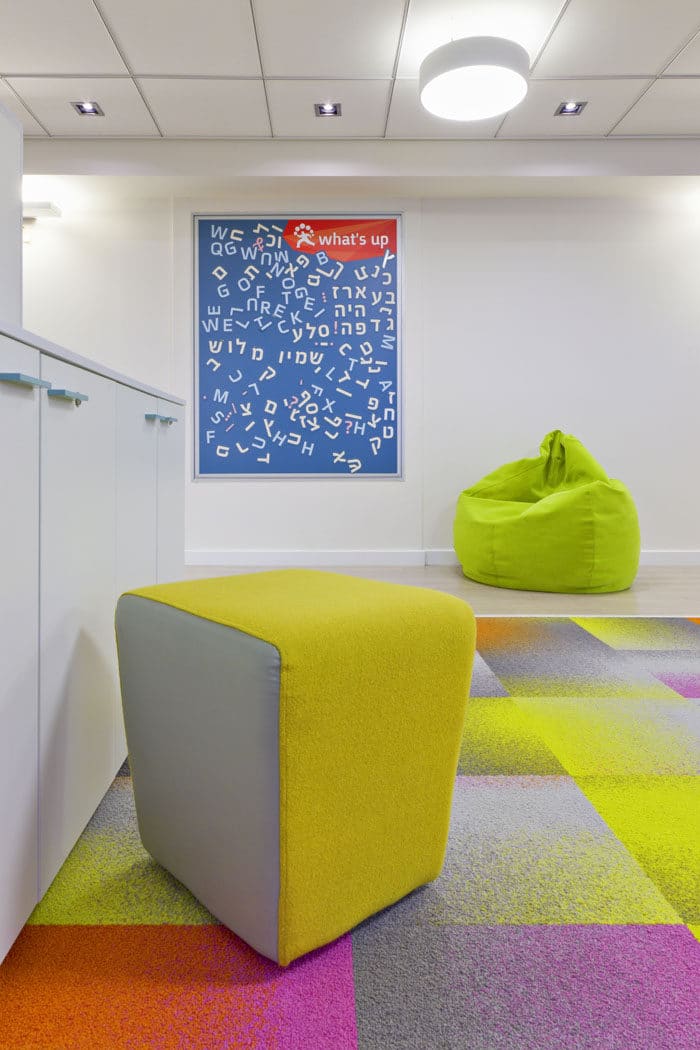
Magnetic games are very interesting because they connect. You can see in the picture above, a letter-connecting game, through which you can wish a happy birthday and have fun. Writing on conference rooms walls, has become a common practice in recent years that creates a sense of freedom and good vibes.
My Advice for Active Multimedia in Offices: It is useful to assign a ‘communication wall’ at the office, where you can snap photos, write different messages or draw. The wall can be located in the kitchen, or even in the office entrance. By using erasable magnetic boards, the messages are updated regularly. The decision of the type of communication walls will be in accordance with the corporate culture. Some companies will like the idea of writing on the walls and place many erasable magnetic boards or write directly on the wall. In other companies the communication will be done in a more defined and formal format in a specific area.
Along with the relentless efforts of human resources managers to consolidate employees into the community, there is also awareness regarding the need for the individual employee to define his or her own space and uniqueness within the community. Allowing self-expression of each employee – strengthens his relationship with the company and his friends. First and foremost, you should allow employees to design and choose their preferred visibility when it comes to their personal workspace. Personalized design and the ability to make decisions, even minor ones, about the work station, creates an emotional connection and belonging to the company.
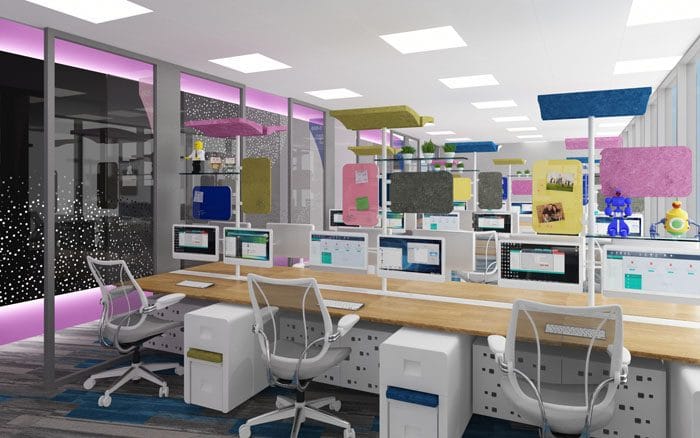
In the project above, that includes large open spaces – we faced a challenge. We asked ourselves – how can we create a feel of belonging, control and a sense of self-expression within the employees, as we seat them in large, fairly anonymous spaces when the built-in constraint was relatively crowded seating? The solution we proposed is that every employee can create his or her own work station the way they choose to, by selecting certain colors from the company’s color palette and choose some design elements, such as glass or wood shelves, acoustic fixture or alternatively a lamp and other elements from a kit designed by the interior designer. Of course, after the station is build, the worker can display pictures and items on it, and it will be a way to express a part of the employee’s personality.
My advice for allowing self-expression: encouraging employees to take an active part in the office design decisions, for example, choosing one wall color in their room or bringing and presenting, if possible, their personal artwork objects such as photographs, collection items, etc. When designing work stations, it is advisable to assign shelves or areas to hang personal items.
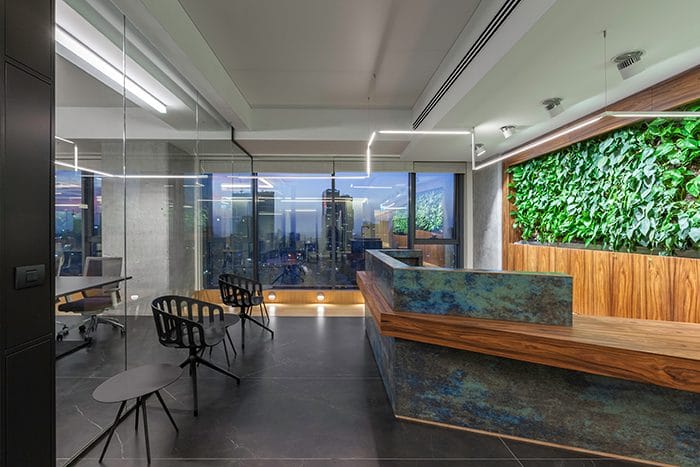
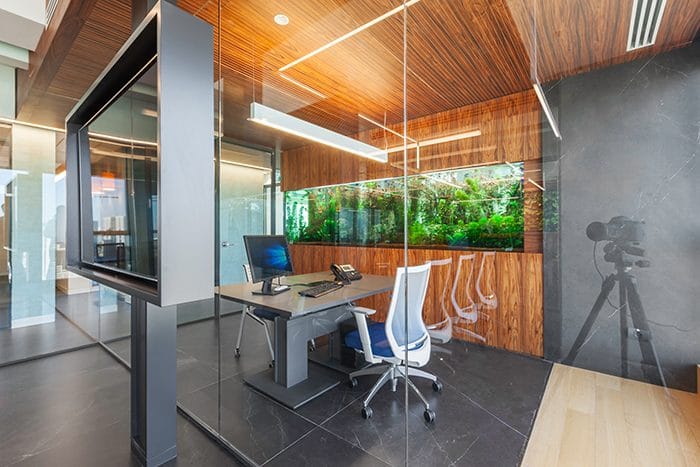
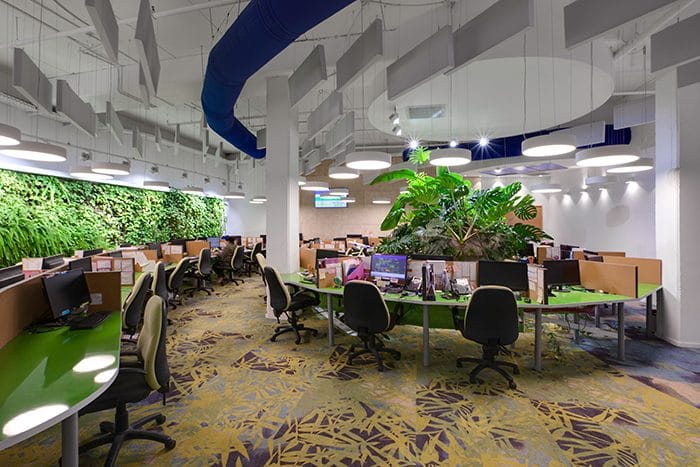
After reading the discussion in this article on formulating an employee community, you may also be interested in understanding how to create well-being in your work environment.
In recent years, we understand the importance of incorporating nature into the office, including by integrating vegetation and bringing in natural light into work spaces. For examples, see the photos above of styled offices with a combination of vegetation and aquarium elements. Here you can read and get some helpful tips on the subject.
All rights reserved to Michal Rosen – Architecture, interior design, and workspace branding